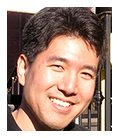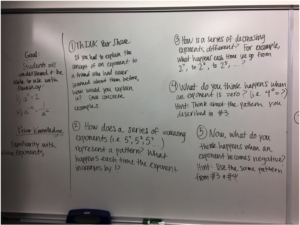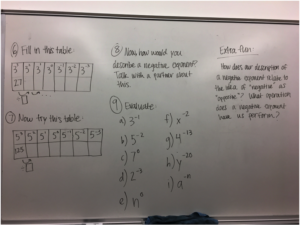Lesson Planning Workshop in a Methods Course

Ryota Matsuura
Assistant Professor of Mathematics and Director of Mathematics Education, St. Olaf College
MCTM VP for Mathematics
I teach at St. Olaf College, where we have a small (but vibrant!) math education program for secondary pre-service teachers (PSTs). For these PSTs, my methods course is the only course in math education that they take. They take many other courses in the Education Department—Educational Psychology, for example—but not specifically focused on the teaching of mathematics. In such limited time with these PSTs, it’s a challenge to not only meet all of the MN Board of Teaching Standards, but also guide their thinking and practice in a way that emphasizes “the teaching and learning of meaning mathematics for all students” (from the MCTM Mission Statement).
One of the things that I tried out this year is what I call Lesson Planning Workshop. My PSTs work in pairs or groups of three (I had six students in my fall semester methods course). They take a section of an Algebra 1, Algebra 2, or Geometry textbook that they’ve studied the night before. Then they spend 30–40 minutes designing a set of problems for secondary students. The aim of these problems is to help students learn the content through hands-on experience and productive struggle—creating their own examples, looking for patterns and underlying structure, formulating generalizations, and arguing over solutions—all before they see any formal presentation of those ideas.
The PSTs write these problem sets on the white board. Then we spend the rest of class presenting and providing feedback to each other. Here is a sample problem set for an Algebra 1 class. These problems are intended to guide the students to discover for themselves the meaning the zero exponent (e.g., 40) and the negative exponent (e.g., 5–3).


We do this mostly in the second half of the semester. We spend a good chunk of the first half of the course thinking about what these problems look like and what’s entailed in designing them. The PSTs all find this activity (along with the micro-teaching lessons that I have them plan and teach individually) to be the most helpful part of the course in their development as future teachers. It’s rewarding for me to see their growth as well—by the end of the semester, it was becoming quite natural for them to write problems that guide students to figuring out new ideas on their own. Of course, implementing such problems in an actual classroom of 25–30 students is another challenge, something that they’ll (begin to) learn to do during student teaching and beyond!
